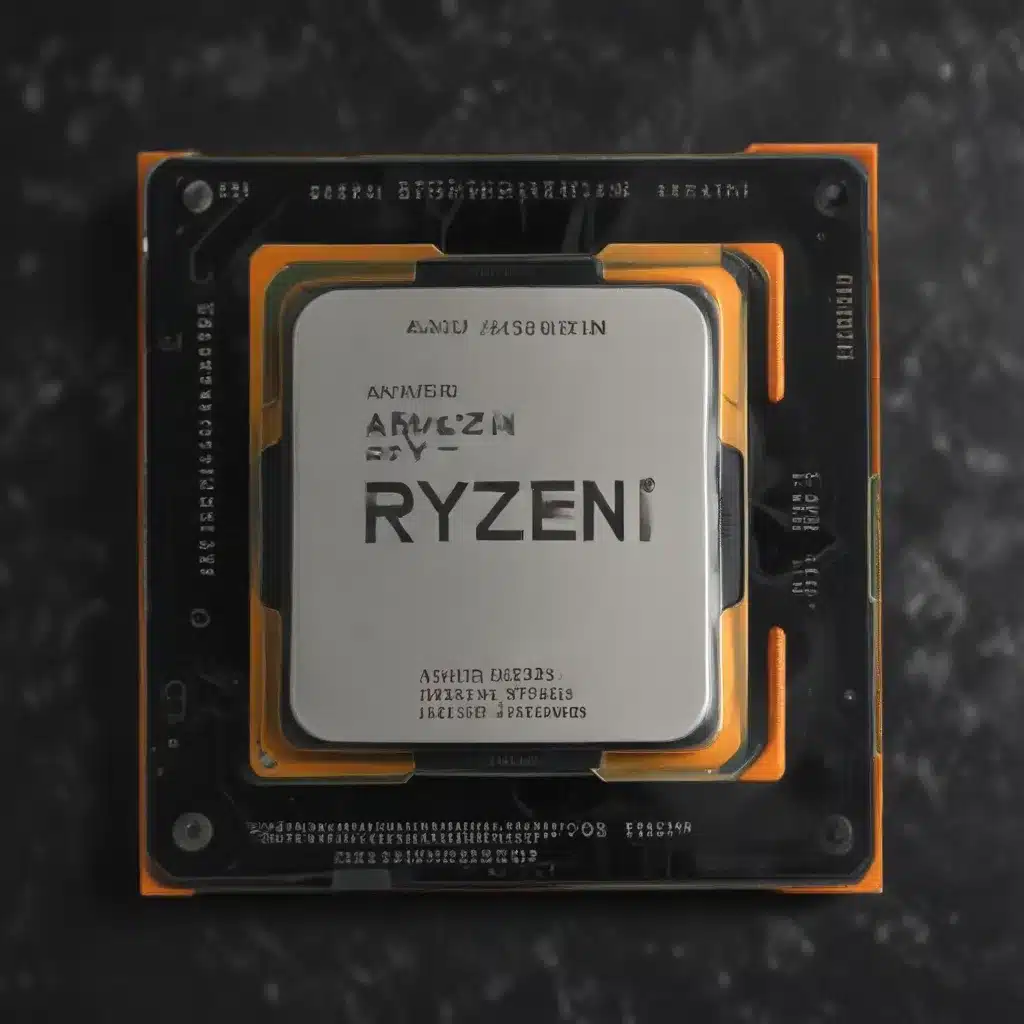
Redefining Performance and Efficiency
The release of AMD’s Ryzen 7000 series processors has sent shockwaves through the desktop computing landscape. These powerful chips represent a significant leap forward in both performance and efficiency, challenging the status quo and redefining what’s possible from a mainstream desktop CPU. As an experienced IT professional, I’m excited to dive deep into the technical details and provide practical insights on how the Ryzen 7000 series can benefit a wide range of users, from enthusiasts to content creators and gamers.
Thermal Headroom and Intelligent Boosting
One of the most talked-about aspects of the Ryzen 7000 series is the processors’ ability to operate at high temperatures without compromising reliability or longevity. AMD has engineered these CPUs to thrive at up to 95°C, a temperature that may seem high to some, but is actually a carefully considered design choice.
“At AMD, we’re extremely proud of what our engineers accomplished with the new Ryzen 7000 series processors and platform from all angles. Whether it’s performance, efficiency, or longevity, this is just a killer processor.”
The key to this high-temperature operation is AMD’s Precision Boost 2 (PB2) algorithm, which dynamically controls the processor’s boost behavior based on a variety of factors, including socket power (PPT), sustained current (TDC), peak current (EDC), and temperature (TjMax). PB2 is designed to push the CPU to its absolute limits, extracting maximum performance while staying within these predefined boundaries.
“Put simply, because Ryzen 7000 is intelligent, it targets the maximum power and temperature limits and goes there as fast as it can because it knows that’s where it will get the best performance.”
This intelligent thermal management means that Ryzen 7000 processors will happily run at 95°C under heavy multi-threaded workloads, as this is the optimal temperature for delivering peak performance. Interestingly, this temperature target has remained consistent across several generations of Ryzen CPUs, but the Ryzen 7000 series is the first to have access to the higher socket power levels that make 95°C the sweet spot.
Cooling Considerations
While the Ryzen 7000 series can operate at these high temperatures without issue, it’s important to note that cooling solutions can still impact performance to a degree. When comparing different cooling setups, from high-end liquid coolers to stock air coolers, the temperature delta is relatively small, with the liquid cooler offering only a slight advantage in heavily multi-threaded workloads.
“Liquid cooling is recommended for AMD Ryzen 7000 Series processors like the Ryzen 9 7900X and Ryzen 9 7950X to get the most multithreaded performance possible, especially when interior case temperatures are high. But that doesn’t mean they can’t be used with common air-cooling solutions.”
The key takeaway is that the Ryzen 7000 series scales remarkably well across a range of cooling solutions, with even a basic air cooler providing a solid experience. This efficiency means that users don’t necessarily need to invest in high-end cooling to extract the maximum performance from these processors.
Power Consumption and Efficiency
Another area where the Ryzen 7000 series shines is power efficiency. These CPUs are designed to operate within a range of TDP (Thermal Design Power) categories, from 65W to 170W, allowing users to balance performance and power consumption based on their specific needs.
“Heat is a result of power draw, not the measured processor temperature. Consider the following question: What creates more heat? Admittedly, this can be counter intuitive. But the simple answer is when it comes to electronics, heat means power, and power means heat generation.”
The Ryzen 7000 series’ efficiency means that even at higher power levels, the processors generate less heat compared to previous generations. This translates to improved system cooling and potentially lower electricity bills for users running demanding workloads.
For users who prioritize energy efficiency, AMD provides the Ryzen Master utility, which allows for one-click switching to an ECO mode. This mode can drop the processor’s TDP from 170W down to as low as 65W, with virtually no impact on game and single-thread performance.
Memory and Platform Upgrades
The Ryzen 7000 series also introduces several platform-level improvements that enhance the overall computing experience. These processors support the latest DDR5 memory, which offers higher frequencies, greater capacities, and improved power efficiency compared to previous-generation DDR4 memory.
Additionally, the Ryzen 7000 series is built on AMD’s new Socket AM5 platform, which provides a clear upgrade path for users looking to future-proof their systems. This new socket supports a range of features, including PCIe 5.0 and USB 4, ensuring that Ryzen 7000-based systems will remain cutting-edge for years to come.
Conclusion: Unlocking the Full Potential of Desktop Computing
AMD’s Ryzen 7000 series processors represent a significant leap forward in desktop CPU performance and efficiency. By pushing the boundaries of thermal headroom, power consumption, and platform capabilities, these chips offer a compelling solution for a wide range of users, from enthusiasts and content creators to gamers and everyday PC users.
Whether you’re looking to build a high-performance gaming rig, a powerful workstation, or a well-balanced everyday system, the Ryzen 7000 series should be at the top of your consideration list. With its intelligent thermal management, efficient power consumption, and future-proof platform features, the Ryzen 7000 series is poised to redefine the standards of desktop computing.
To learn more about the Ryzen 7000 series and how it can benefit your computing needs, be sure to visit https://itfix.org.uk/, where you’ll find a wealth of resources and expert advice to guide you on your technology journey.












